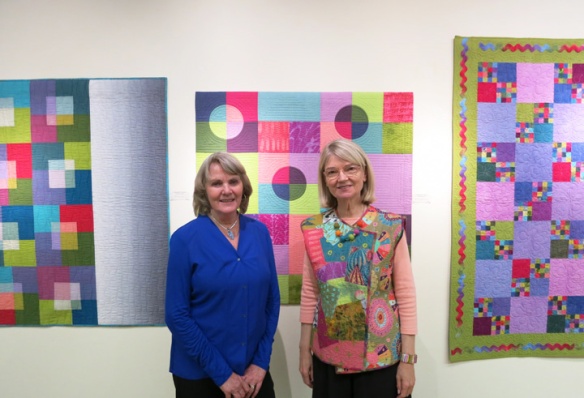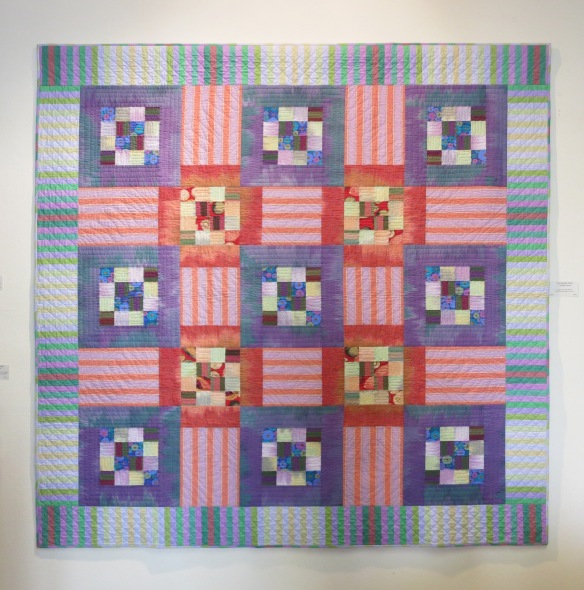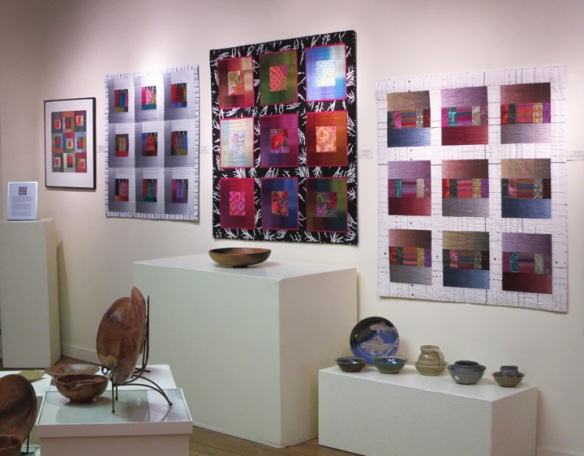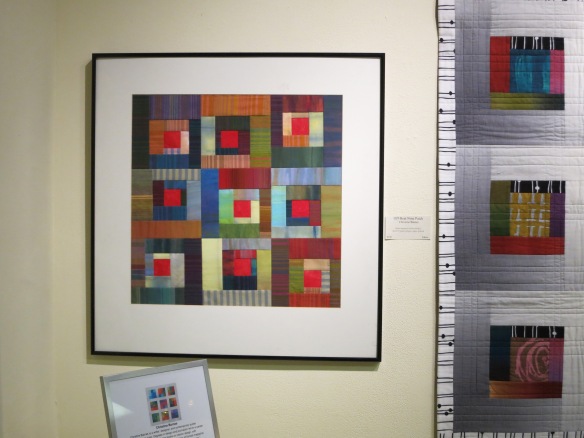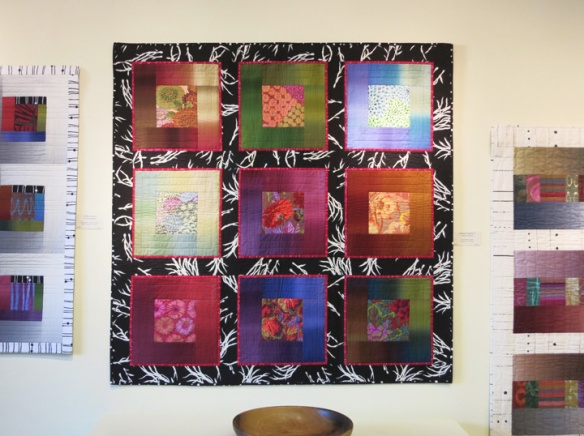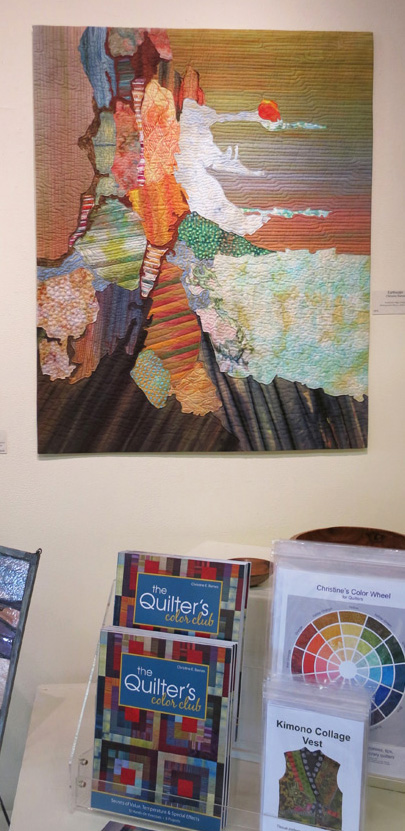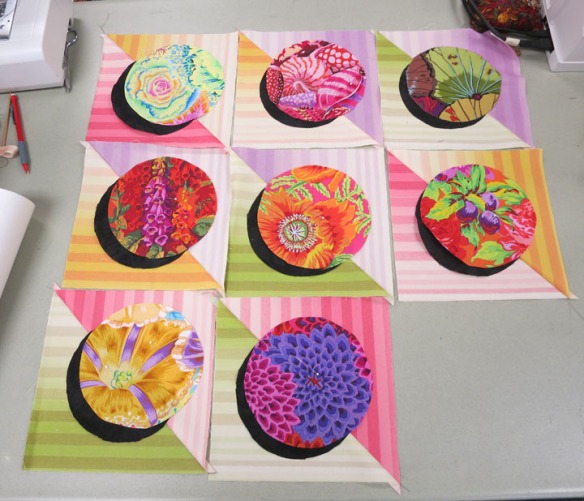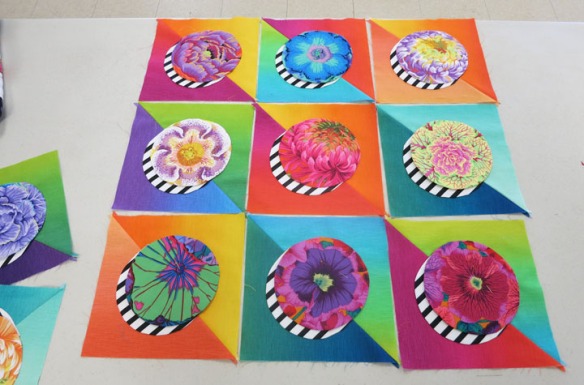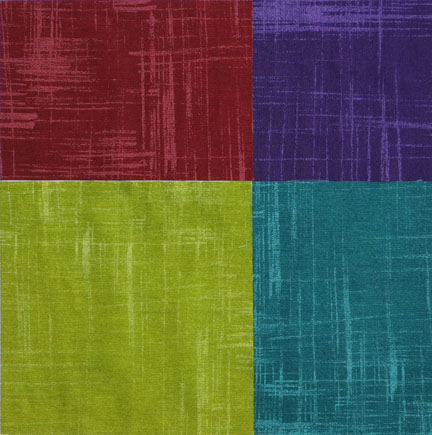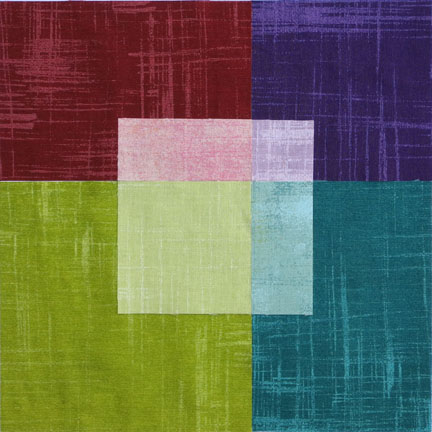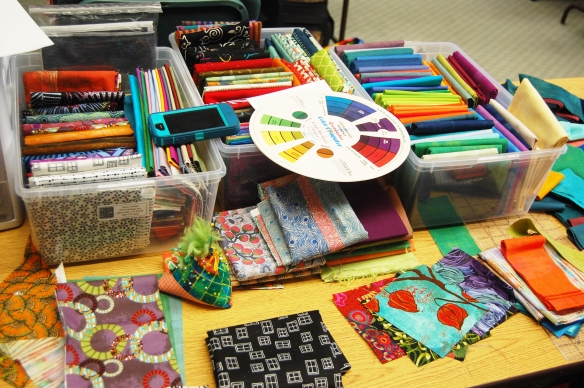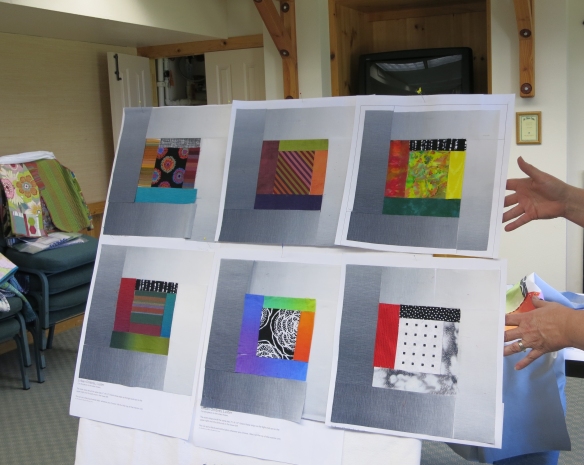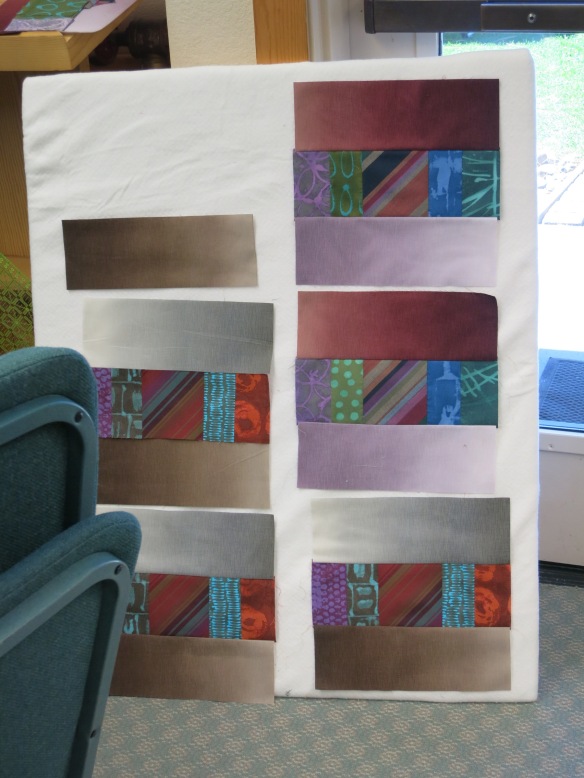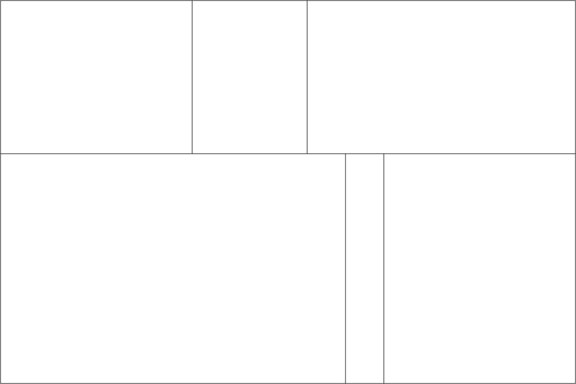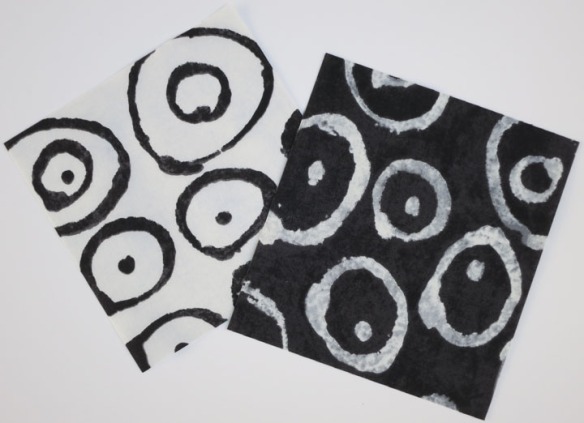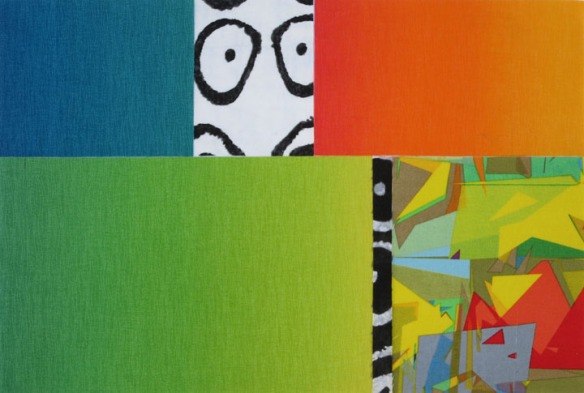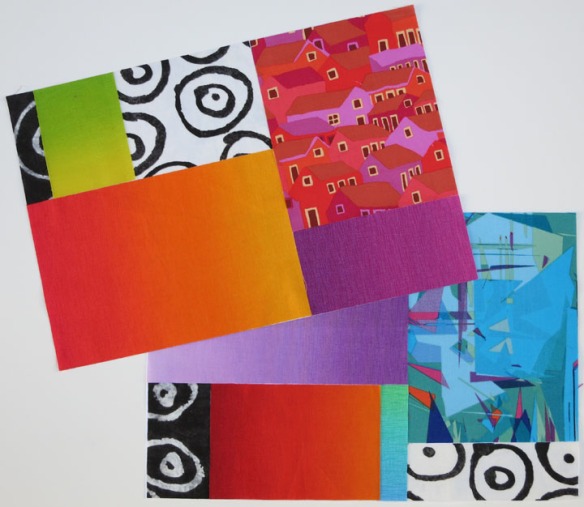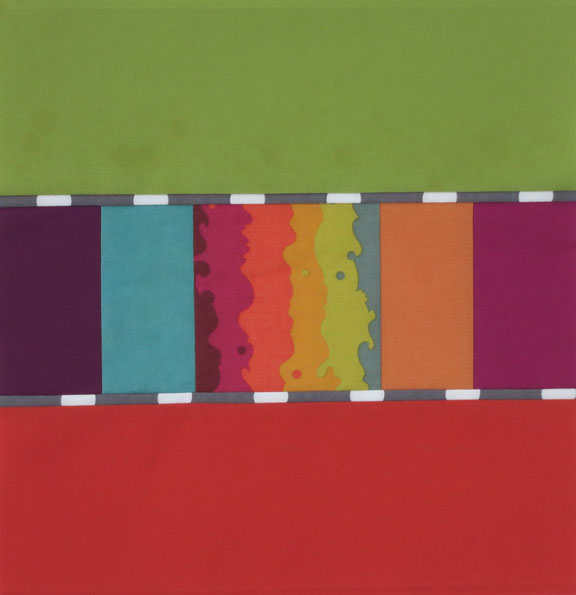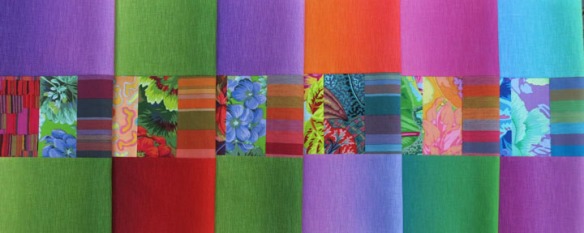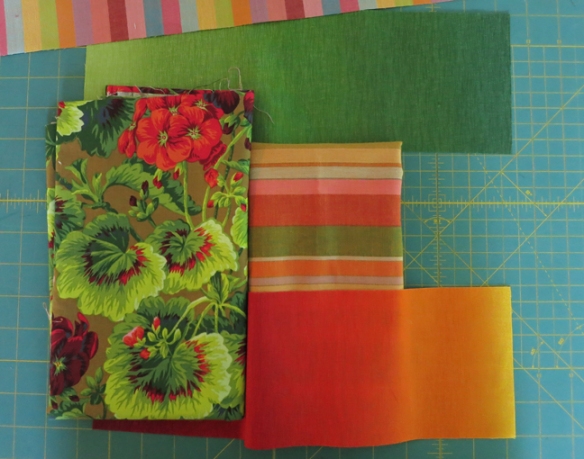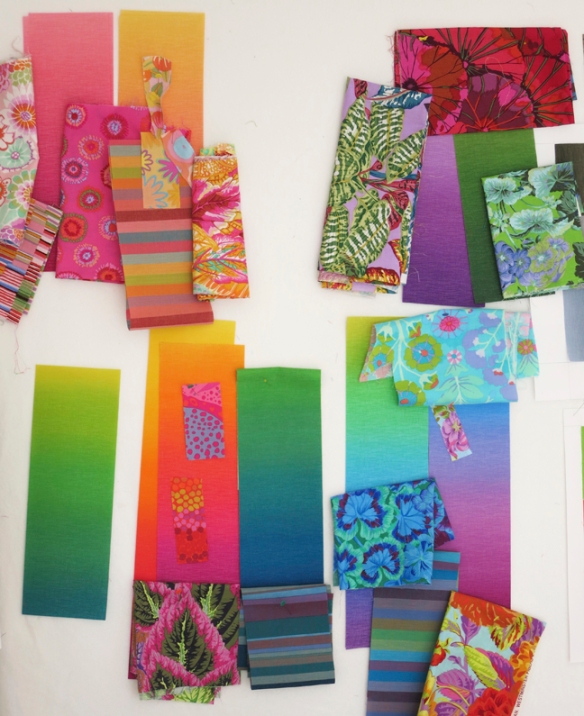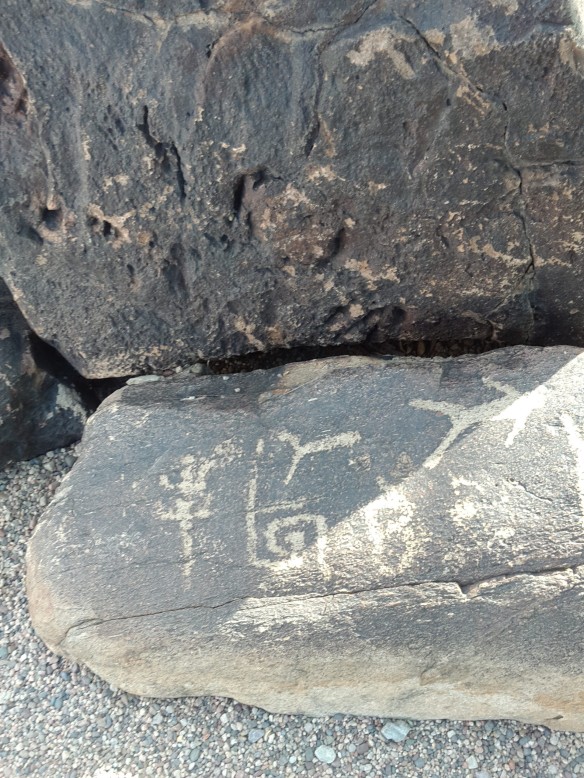by Christine Barnes
First, we have good news to report on Sandra: no need for surgery. The ortho doc says it will take time, but she is in good spirits and already has a bit of mobility in her left arm. Each of us has seen her, and all things considered, she looks great. So, raise a glass (or in the case below, a vase of my favorite ornaments) to Sandra—keep mending!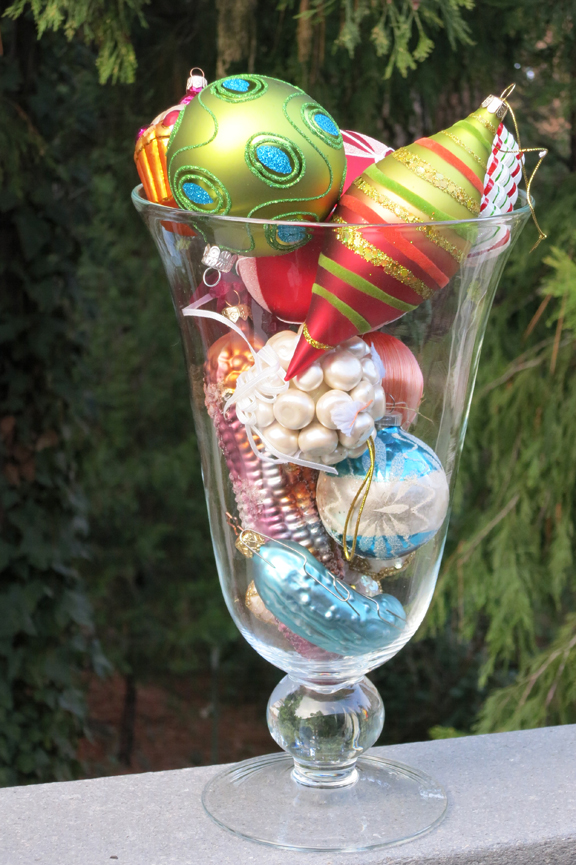 Me, I’m happily re-organizing my life, starting with my sewing room. It feels SO good to make progress, and in the process I’ve unearthed buried treasure in the form of blocks I had fun making, but haven’t used yet. In no particular order:
Me, I’m happily re-organizing my life, starting with my sewing room. It feels SO good to make progress, and in the process I’ve unearthed buried treasure in the form of blocks I had fun making, but haven’t used yet. In no particular order:
For several years I made 20-inch pillows as gifts. This pillow top was supposed to be finished with 4″-wide green velvet borders. The angel fabric in the center came from Heidi’s fabulous fabric store, back in the day.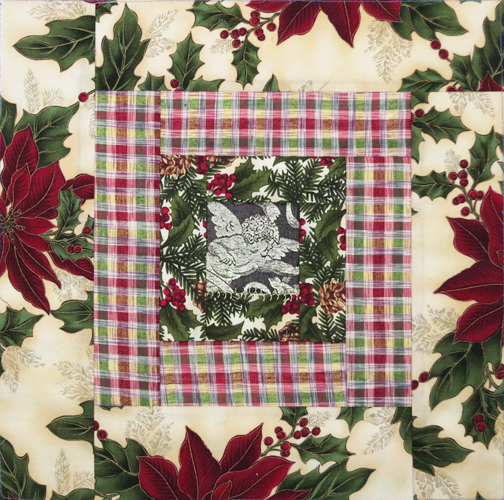 Using the same format, I made a woodsy block that I planned to frame. It’s a great format for working with value to create a sense of foreground/background.
Using the same format, I made a woodsy block that I planned to frame. It’s a great format for working with value to create a sense of foreground/background. Love the rich “lodge” colors of the ombré in this 12-inch block. Add a Kaffe print and a yummy batik . . .
Love the rich “lodge” colors of the ombré in this 12-inch block. Add a Kaffe print and a yummy batik . . .  Then there was the Kaleidoscope class taught by Jan Soules at Pine Tree Quilt Guild. I still need that 12-step program for pattern addicts because as you can see, I can’t help myself. This was the first of two blocks I made. I plan to make more, honest.
Then there was the Kaleidoscope class taught by Jan Soules at Pine Tree Quilt Guild. I still need that 12-step program for pattern addicts because as you can see, I can’t help myself. This was the first of two blocks I made. I plan to make more, honest.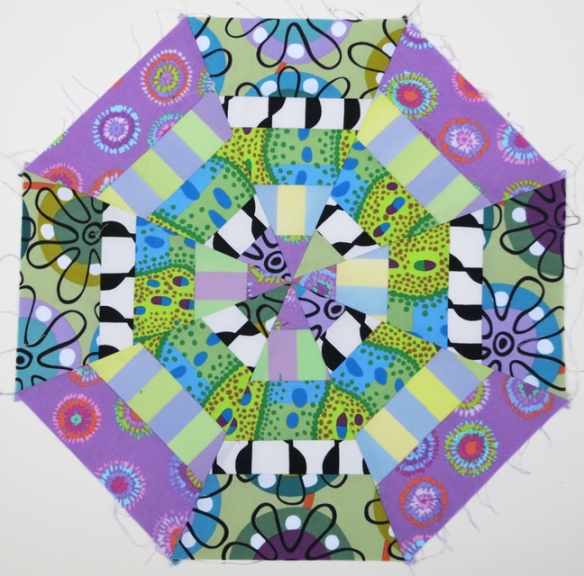 As you well know, I love, love the combination of Kaffe stripes and prints with ombrés. This block didn’t make it into my Lustrous Squares II quilt, but I think it has a future as a pillow top. It’s 16″ square.
As you well know, I love, love the combination of Kaffe stripes and prints with ombrés. This block didn’t make it into my Lustrous Squares II quilt, but I think it has a future as a pillow top. It’s 16″ square.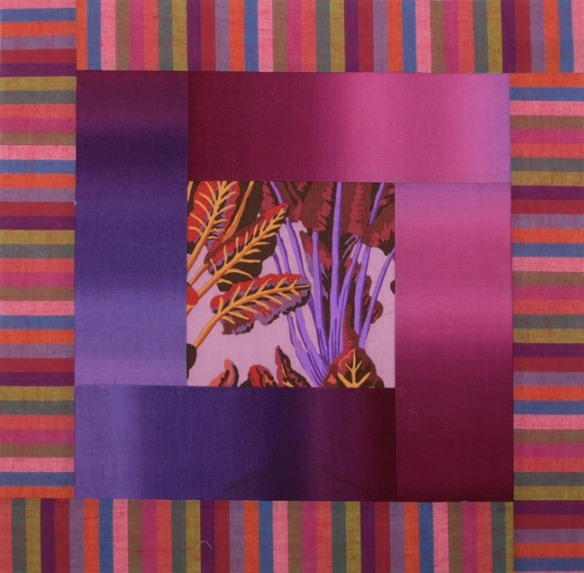 Finally, I’m happy to tell you that my “Swizzle Sticks” quilt, which you saw in various stages, is in the latest issue of American Patchwork & Quilting. Here’s how they styled the shot that went with the article. (Used with permission from American Patchwork & Quilting® magazine. ©2015 Meredith Corporation. All rights reserved.)
Finally, I’m happy to tell you that my “Swizzle Sticks” quilt, which you saw in various stages, is in the latest issue of American Patchwork & Quilting. Here’s how they styled the shot that went with the article. (Used with permission from American Patchwork & Quilting® magazine. ©2015 Meredith Corporation. All rights reserved.)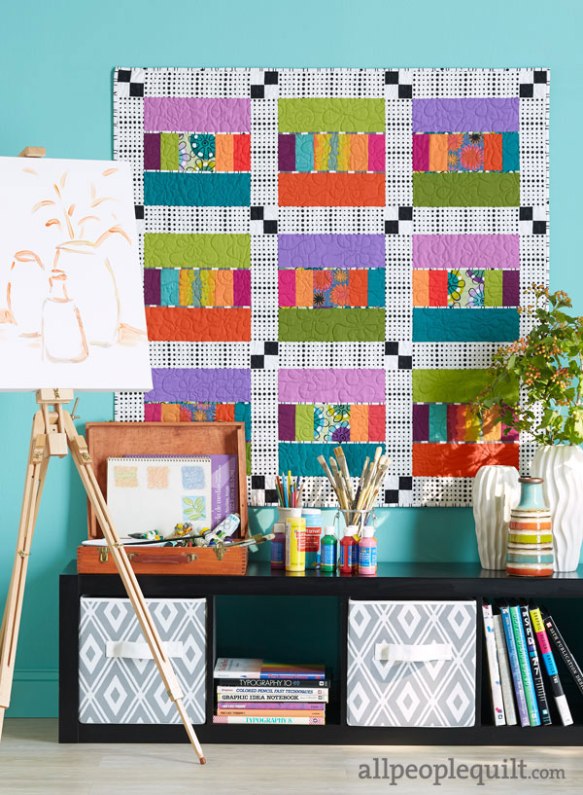 By coincidence, the quilt on the cover, by Marcia Harmening, features two of the Gelato ombrés I’ve used in so many of my projects. Small world.
By coincidence, the quilt on the cover, by Marcia Harmening, features two of the Gelato ombrés I’ve used in so many of my projects. Small world.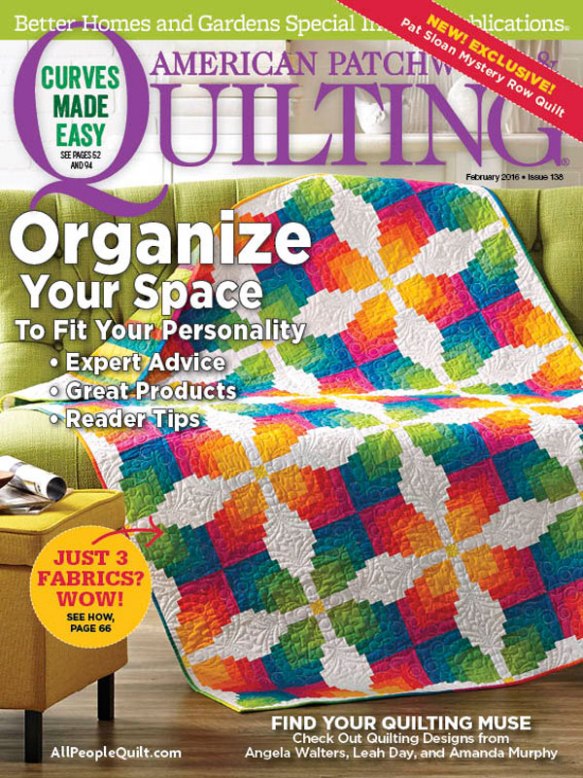 That’s it from me for now. I hope your days are merry and bright, and that they include time to plan (if not start) a quilt or wearable or other project you’re wildly passionate about. Cheers!
That’s it from me for now. I hope your days are merry and bright, and that they include time to plan (if not start) a quilt or wearable or other project you’re wildly passionate about. Cheers!


